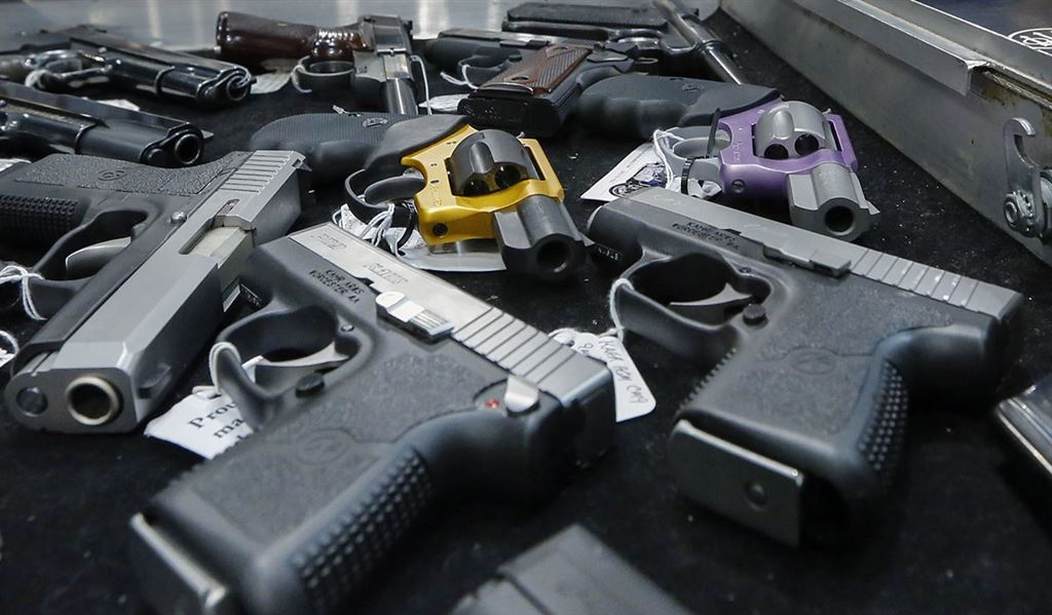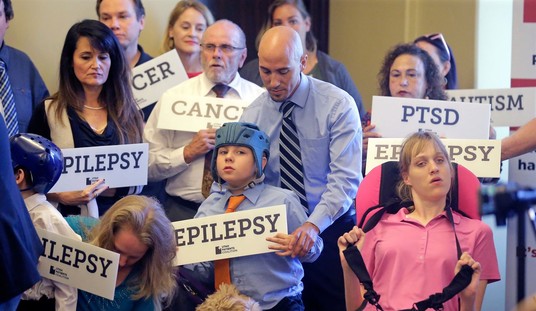The folks at The Trace have never seen a gun control law they wouldn't support. On the upside, they tend to be overt enough with their anti-gun agenda that at least we know where they're coming from. The Bloomberg-funded "journalism" project talks gun control as an unmitigated good thing regularly enough that anyone can see it.
Not that other media outlets acknowledge this fact when they repeat what The Trace says, of course. That might tip their hand, after all.
But because of that bias, I'm completely unshocked that with a reduction in firearm-related homicides, The Trace wonders if gun control is responsible. They turn to a RAND meta-analysis to see.
It’s becoming increasingly clear that Americans have, on the whole, been safer from violence so far this year than any other since before the pandemic.
There were fewer homicides and domestic violence incidents in the first half of 2024 than in the same period in 2019, a report last month from the Council on Criminal Justice found. And the latest data from more than 200 of the nation’s largest cities indicate that homicides are down more than 17 percent this year compared to last.
That’s nearly a thousand fewer lives lost in just the first seven months of 2024.
The drop in violent crime means a drop in gun violence — and vice versa — because the vast majority of homicides involve firearms. Preliminary data from the Centers for Disease Control and Prevention corroborates that, showing a significant decrease in gun deaths in 2023, largely because of reductions in firearm homicides and a marked slowing of a years-long increase in firearm suicides.
The decline has been recent, and intense. A combination of factors is likely contributing to it, including a return to pre-pandemic norms and substantial investments in violence prevention strategies. The trend also raises a complex question: Are gun laws playing a role?
Let's note that while the decline has been "recent, and intense," so was the spike in violent crime. It came out of the blue and rose suddenly and alarmingly. We'll get to suicides, which they talk about having seen a "years-long increase" in a moment.
But for the most part, little has changed legally in the ensuing years. Some states have passed a small handful of gun control laws, but the violence is down across the board. Every state, even those states that loosened restrictions on guns are seeing violent crime rates drop.
The report — first published in 2018 and updated regularly since — is a meta-analysis that explores more than 200 combinations of policies, from background checks to carry laws, and related outcomes, like violent crime or suicide. In a line of study where very few effects can be authoritatively linked back to causes, RAND’s report has long been respected among gun policy researchers and gun violence prevention advocates as a panoramic accounting of the state of the field.
Previous versions of the report found evidence that background checks, domestic violence-related gun prohibitions, and waiting periods may reduce gun violence. But the latest update includes some notable findings, too.
There’s now supportive evidence — RAND’s strongest designation — that minimum age requirements for purchasing a gun reduce firearm suicides among young people. And Child Access Prevention Laws, a type of safer storage law, continue to demonstrate robust effectiveness in reducing firearm suicides, unintentional shootings, and violent crime.
“I think it’s interesting that both of those are targeting an age at which people might be particularly vulnerable to harms from gun violence,” said Rosanna Smart, who oversees the RAND meta-analysis. “For a while, we’ve found the evidence to be pretty robust that those types of laws or safe storage laws more broadly can reduce various forms of firearm injury and death among youth.”
There's a major problem with all of these studies, though. None of them looked at the overall suicide rate.
See, I fail to see how anything can be argued to have a benefit if it just shifts the means of a thing happening. For example, if the gun homicide rate drops but the overall homicide rate doesn't, did anything really get accomplished?
In a similar vein, if people shift to committing suicide via other means and are successful enough that the suicide rate remains unchanged, were the restrictions really beneficial? And that's assuming that those same restrictions aren't contributing to homicides as some people are now unable to get guns for self-defense purposes.
Of course, one wonders why they spent so much time trying to lump suicides in with "gun violence" as a whole. While I understand how the reasoning goes--a gunshot wound is a violent would regardless of who pulls the trigger--most average folks don't think of suicides as part of gun violence. Further, they start by talking about the homicide rate before shifting to suicides.
Yet the homicide rate still dropped and well before any federal gun control came down the road, and it did so at a rate well beyond what the law would have done.
But I will note that the Bruen decision made every state in the nation "shall issue." People like the folks at The Trace figured that the streets would run red with blood and we'd see a massive surge in homicides, but instead, we've seen a reduction.
Unlike them, I'm not going to put all of it on the change in laws, but the truth is that causation should create correlation. If more guns mean more crime and more concealed carriers mean more violence and death, then why didn't we see it?
The Trace can look as they wish, but unless they actually start accepting that gun control doesn't have the impact they want it to have, they'll never see the reality staring them right in the face.







Join the conversation as a VIP Member